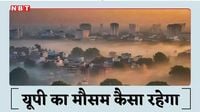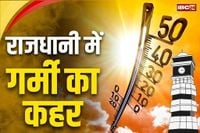The Indian Meteorological Department (IMD) has issued a warning for intense heat across several states, with temperatures soaring to alarming levels. As of April 22, 2025, regions including Delhi, Rajasthan, and Uttar Pradesh are experiencing severe heat, prompting concerns about public health and safety.
In Delhi, the mercury has crossed the 40 degrees Celsius mark, reaching as high as 41.3 degrees Celsius on April 21. This is a staggering 3.6 degrees above the seasonal average, making it the hottest day recorded so far this year. The air quality in the capital has also deteriorated, falling into the 'poor' category with an AQI of 220, raising alarms among health officials.
Residents are feeling the effects of the heat, with many opting to stay indoors to avoid the sweltering conditions. The demand for air conditioning units and coolers has surged as people seek relief from the oppressive heat. The IMD has advised the public to take precautions against heat exposure, urging them to stay hydrated and avoid outdoor activities during peak hours.
"The heat wave is expected to persist in Delhi and surrounding areas for the next few days," a spokesperson from the IMD stated. "We recommend following health guidelines to mitigate the effects of extreme temperatures." The forecast indicates that the situation may worsen, with temperatures expected to soar further in the coming days.
In Uttar Pradesh, the heat has been equally oppressive. On April 21, temperatures in cities like Lucknow, Prayagraj, and Kanpur reached above 40 degrees Celsius. The maximum temperature recorded in Lucknow was 41.4 degrees Celsius. The state meteorological department has issued heat wave alerts for several districts, including Banda, Chitrakoot, and Agra, where the heat index is expected to rise above 60 degrees Celsius.
"The heat wave conditions are likely to continue, causing discomfort to residents," said a meteorologist in Lucknow. "We advise everyone to remain indoors during the hottest parts of the day and drink plenty of fluids to stay hydrated." With the heatwave expected to last through the week, health experts are particularly concerned about vulnerable populations such as the elderly and children.
Meanwhile, in Rajasthan, temperatures have also surged, with some areas reporting highs between 43 to 46 degrees Celsius. The city of Jaisalmer recorded a maximum temperature of 45 degrees Celsius. The IMD has issued heat wave alerts for several districts, advising residents to take necessary precautions against the heat.
"The conditions are quite severe, and we expect the temperature to rise further as the week progresses," noted a representative from the Rajasthan meteorological department. "Residents should stay informed about weather updates and take care to avoid heat-related illnesses." The forecast predicts that the intense heat may persist until at least April 25, before any potential relief from a western disturbance is expected.
In Odisha, Jharsuguda has been particularly hard hit, recording a maximum temperature of 45.3 degrees Celsius. The IMD has warned that heat conditions are likely to worsen in the coming days, leading to increased discomfort for residents. The situation has prompted health officials to issue warnings about the risks associated with extreme heat, particularly for those who work outdoors.
"We are urging people to limit their time outside and take frequent breaks to cool down," said a health official. "Heat exhaustion and heat stroke are serious risks during such extreme conditions." The IMD has also predicted light to moderate rainfall in some parts of the country, including the Andaman and Nicobar Islands and parts of the western Himalayas, which may provide some respite from the heat.
In contrast, areas in eastern Uttar Pradesh and Bihar are anticipating rainfall, which could help alleviate some of the heat. The forecast suggests that thunderstorms and light rain may occur, providing much-needed relief to residents suffering from the oppressive heat.
Despite the potential for rain in some regions, the IMD has cautioned that the overall heat wave conditions are likely to persist in many states, including Punjab, Haryana, and parts of Madhya Pradesh. In Chhattisgarh, temperatures have reached as high as 43.7 degrees Celsius, with predictions that they may climb to 44 degrees in the coming days.
The relentless heat has raised concerns about public health and safety across the affected regions. Health experts are advising citizens to remain vigilant and take necessary precautions to protect themselves from heat-related illnesses. The IMD continues to monitor the situation closely, providing updates as conditions evolve.
As temperatures rise, the need for community awareness and proactive measures becomes increasingly critical. Citizens are encouraged to stay informed about weather updates and heed the advice of health officials to mitigate the adverse effects of extreme heat.
With the summer months approaching, the ongoing heat wave serves as a stark reminder of the challenges posed by climate change and the importance of preparedness in the face of extreme weather events.









